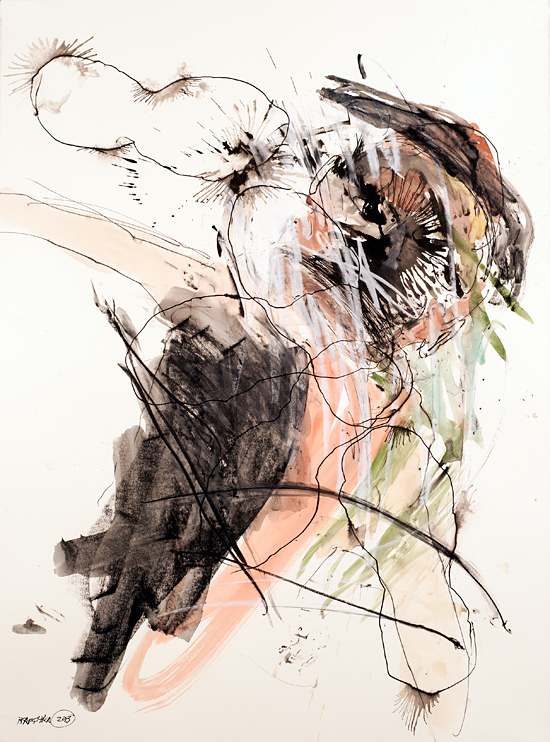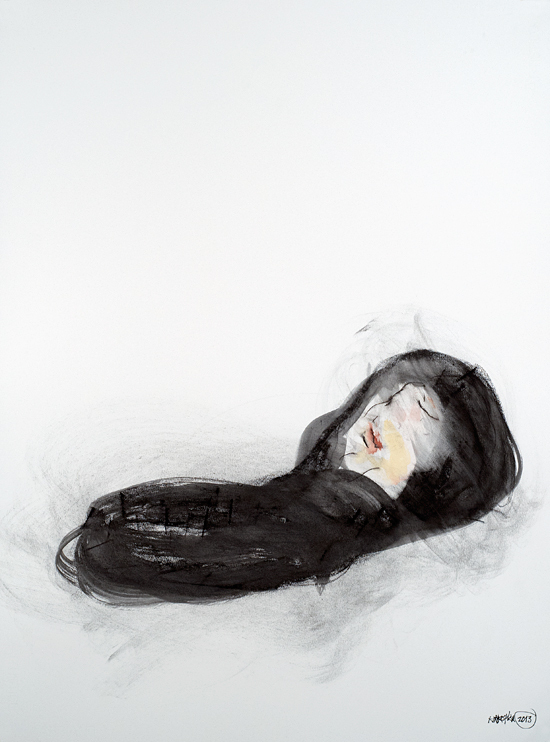...The subject of a picture is always more important than the picture.
—Diane Arbus. New York: Don Arbus and the Estate of Diane Arbus and Aperture Foundation, Inc., 1972, p. 15
War was something horrible, but nonetheless something powerful... It is necessary to see people in this unfettered condition in order to know something about them.
I am drawn to painting war because I fear it, I fear losing my life or living without freedom. My parents survived the gas chambers and pogroms in which their families perished. The infinite oscillation between victor and vanquished is as present in our world as it was 2000 years ago. My father said "no more war" and chose to live in the US but I went to high school with the draft for the Vietnam War looming over me.
"The V.C. had shot the vice chief's father through the chest, and treated the Buddhist leader with sacrilegious contempt—the whole front of his head was crushed in, and between his eyes was a bullet hole you could stick your thumb in. The head is very sacred to the Buddhists."
—Don Moser. Eight Dedicated Men Marked for Death. Life, September 3, 1965
War is a constant in our lives. If I count the wars I am aware of in my lifetime it impresses on me that there is always a war simmering somewhere ready to boil over and proliferate. Disputes, national interests, global warming, nuclear arms race, economic and territorial competition and now perhaps even cyber hacking, can become reason enough to draw swords. We can block out the saber rattling but only momentarily.
The post 9/11 feelings remain with us as engagement and/or closure in Afghanistan continues to remind us that nothing has been conclusively resolved. Today, there are nearly 22 million American veterans. When I checked last Memorial Day, three quarters of them have served in wartime.
"Four hours later, I was standing on a landing zone as the medical helicopter brought Brian back to us. He was in a black nylon body bag. I helped to carry it with three other people; it was so light that it would have hardly been a task for two men. We put him on a stretcher and I reached to make sure he was going in feet first. I felt his head through the bag but couldn't find his feet. I started to imagine what happened. We loaded him into a tan, armored ambulance and closed the door. Tears in my eyes, I stood at attention with the group. Dust was everywhere, and in the distance the constant brown of Afghan mountains."
When I create I am putting onto canvas emotional reactions to a subject. It happens through intoxication with freedom, a temporary experience, profound and convincing. I can be free, unlike in war in which both sides are bound to kill and be killed. My subject matter is not an opinion, an idea or a political position; it is humans and human relations.
War is one place where the participants are without pretenses, the "unfettered condition" as the artist Otto Dix avowed from his experience of combat. Both the worst and the best of humankind become apparent in war. I take the experience of war reported by others and make it felt through a visual language. I do not replicate their words, I make suggestions that are the origin of imagination and not a report of facts. The captions I use for my images are the anchors to the words and the particular empirical experience of a participant. Ambiguity in art is inevitable; it opens up doors to multiple perceptions.
When overwhelmed by chaos, and without certainty of what really happened, there are always strong emotions. What I am hoping to evoke are those emotions, as the poet Tom Sleigh writes in his essay To Be Incarnational about the poetry of David Jones, a soldier in WW1 "So the Word becomes the words that bring the war not only into focus, but make it so physically immediate that abstractions evaporate." (Tom Sleigh)
"I was convinced by the evidence shown to us today that I am wrong as to the state of Lotan's body the way I remember it. His legs and arms were intact. We even saw fingerprints. I know I did pour water over him and I remember him still burning. I remember it mainly on the face, but I now assume that the legs and arms were burning as well and I replaced an image in my head of a distorted burning leg with an amputated leg."
—Uzi Katz
At the same time, the images I create are memorials to family and friends. When the commanding officer of Lotan, my brother in law, recounted Lotan's death from friendly fire in Lebanon, 1982, the telling was separated by a distance of 27 years. It took that long for the officer to tell his story. When I draw from that recounting I am in an emotional world made up of the officer, myself, and Lotan, who now exists only in memory. The officer remembered he found Lotan alive and burning. 27 years later he saw the post mortem photos and it was clear his memory was inaccurate, Lotan died from the shock of a direct hit of a 150mm shell. The officer was overwhelmed by an atrocious death he witnessed 27 years earlier on the battlefield. Approaching this as an artist I want to capture the emotional experience of the commanding officer, feelings he carried with him for 27 years, because that is what remains alive, not the photos. The painting is ambiguous because what it suggests depends on the viewer more than on facts.



